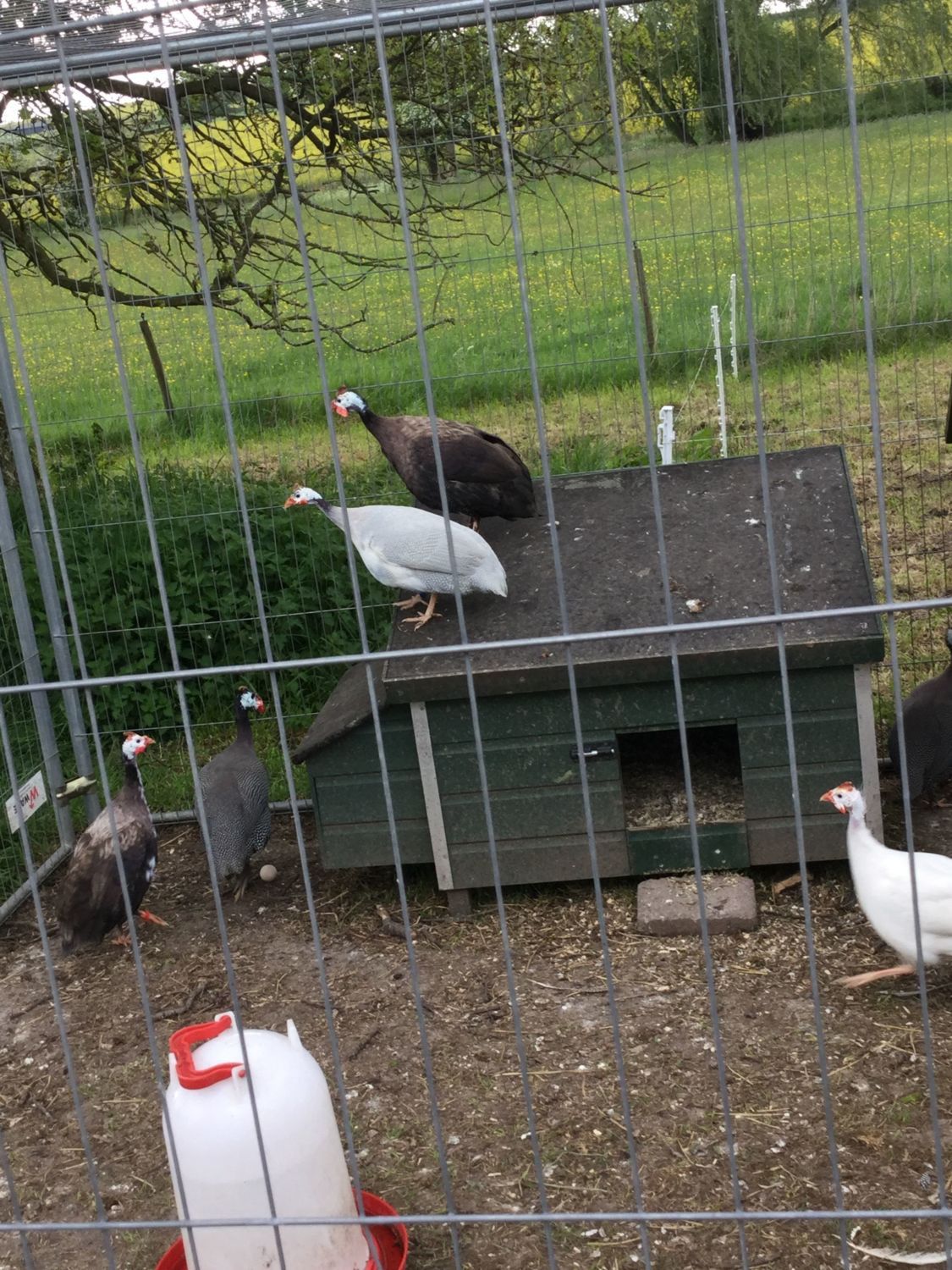Your mulberry appears to be a Royal Purple. It is my belief that Royal Purples true color genetics has not bee sufficiently researched. I have a Royal Purple which based on its parentage has one recessive blue gene from its Coral Blue mother and one buff gene and a DSV (dark shade variance) gene from its Chocolate father which does not agree with stated dominant pearl gray gene which could have only occurred by a color gene mutation. I might have believed that in an isolated instance but that pair produced multiple Royal Purples along with a few chocolates.So I'm not sure what the pied guineas gender is but I think my solid 'mulberry' guinea is female but it regularly chases the other guineas which makes me think it's male but it has some feathers on its back missing from potential treading or just been pulled out. If lavender is recessive why when my lavender is mated to a pearl does it get majority lavender?

For your Lavender and Pearl pair to produce mostly Lavender offspring would indicate that your Pearl has a recessive blue gene. Theoretical results are only that. If 100% of all the eggs hatch from a specific mating and enough eggs hatch the results will be very close to the theoretical percentages. The fewer eggs that hatch the more the theoretical percentages may be off from what actually is produced.
BTW your Royal Purple on top of the shelter sure looks like a male to me. If there are feathers broken off on the back area and in particular the upper wing feathers it would be because it is not the dominant male and is showing the effects of the dominant male breaking off its feathers.
Good luck.
Last edited:






